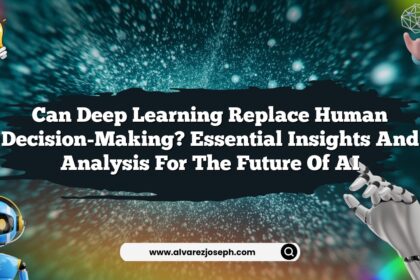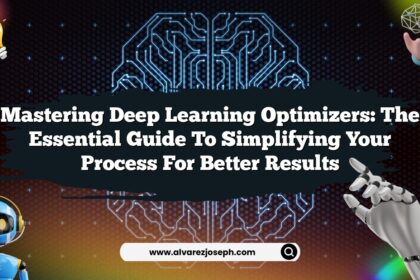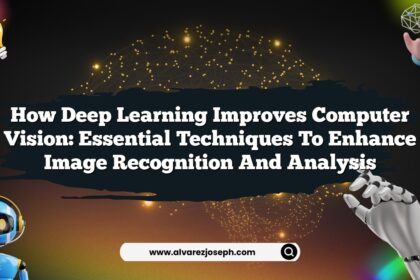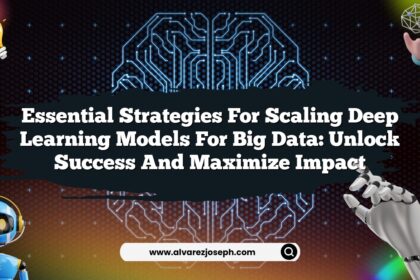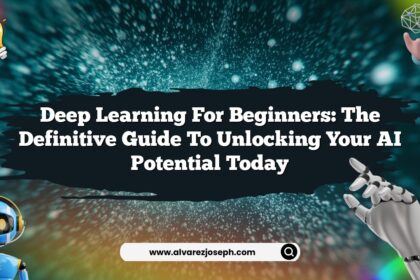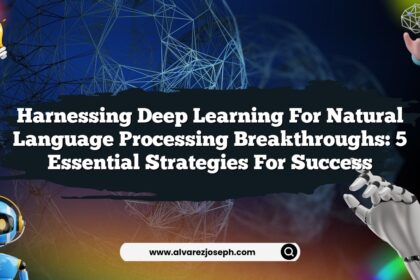Imagine waking up one day to find that your smartphone can predict your needs before you even think of them. Sounds like something out of a sci-fi movie, right? Well, welcome to the world of deep learning algorithms! These clever techniques are not just reshaping technology; they’re fundamentally changing how we interact with it. From chatbots that understand your mood to self-driving cars that navigate complex traffic patterns, deep learning is the powerhouse behind many modern AI applications. But what exactly lies beneath this technological marvel? Let’s unlock these secrets together as we explore the fascinating landscape of deep learning algorithms.
Understanding Deep Learning Algorithms
To grasp the magic of deep learning, we must start by breaking down what it actually means. At its core, deep learning is a subset of machine learning, which itself is a branch of artificial intelligence (AI). Imagine machine learning as a broad umbrella, with deep learning being one of its more specialized sections. While traditional machine learning relies on algorithms that analyze data and make predictions, deep learning utilizes neural networks designed to simulate human thought processes.
Think of neural networks as a complex web of interconnected nodes, akin to a spider’s web. Each node represents a neuron, processing information and passing it on to the next node. The “deep” in deep learning refers to the number of these layers—more layers mean more depth and complexity in understanding data.
But why all this fuss over layers? Well, layers enable the model to learn intricate patterns that simpler models might miss. For instance, a deep learning model can distinguish between cats and dogs by analyzing thousands of images and recognizing features like fur patterns, ear shapes, and much more. This depth is what sets deep learning apart and makes it so powerful.
Key Types of Deep Learning Algorithms
Let’s dive a bit deeper into the types of deep learning algorithms that are shaking things up in the tech world. Knowing these can help you understand where to apply them effectively.
1. Convolutional Neural Networks (CNNs)
Often used in image processing, CNNs recognize patterns and textures in images. They’re the secret sauce behind facial recognition technology and even medical imaging, where they help detect tumors or other anomalies in X-rays.
2. Recurrent Neural Networks (RNNs)
RNNs are like the memory masters of the deep learning family. They’re designed to handle sequential data, making them ideal for tasks such as language translation or speech recognition. Imagine they’re your personal historian, recalling past events to inform current decisions.
3. Generative Adversarial Networks (GANs)
GANs are the creative geniuses of the group. They consist of two neural networks—a generator and a discriminator—that work against each other. The generator creates images, while the discriminator evaluates them. This back-and-forth continues until the generator produces images so realistic they’re indistinguishable from real life. Think of them as the artists and critics of the AI world.
4. Autoencoders
Autoencoders are unique because they compress information into a lower-dimensional space and then reconstruct it. This capability is useful for tasks like noise reduction or anomaly detection. It’s like packing your suitcase efficiently for a trip—getting everything in without leaving behind the essentials.
Each of these algorithms serves a specific purpose and shines in different applications. But what’s even cooler is how they can be combined to tackle complex problems. The synergy of using different models can yield astonishing results.
The Real-World Impact of Deep Learning Algorithms
Now that we’ve peeled back the layers, let’s explore how deep learning algorithms are transforming industries and affecting our daily lives. Hold onto your hats, or should I say, your neural nets!
Healthcare Revolution
Imagine walking into a hospital where AI can instantly analyze your medical records and provide personalized treatment plans. Deep learning algorithms process vast amounts of healthcare data, identifying patterns that can lead to early diagnosis and tailored treatments. For instance, systems like IBM Watson have been used to recommend cancer treatments based on patient data, helping doctors make more informed decisions.
Autonomous Vehicles
Self-driving cars may seem like a distant dream, but deep learning is making them a reality. Tesla, for example, employs deep learning algorithms to analyze real-time data from its fleet of vehicles. This allows the cars to understand their environment, recognize obstacles, and make split-second decisions. Every time you take a ride, you’re experiencing the future of transportation!
Smart Assistants
Deep learning is the backbone of smart assistants like Siri, Alexa, and Google Assistant. These algorithms help understand natural language, enabling these devices to process your requests and respond accurately. It’s like having a personal assistant who anticipates your needs before you even express them—now that’s convenient!
Financial Services
In finance, deep learning algorithms detect fraudulent transactions and assess credit risk. By analyzing spending patterns, these systems can flag unusual activity in real-time, protecting consumers and banks alike. It’s like having a financial guardian watching over your transactions, ensuring your hard-earned money is safe.
Building Your Own Deep Learning Model
Are you feeling inspired yet? Building your own deep learning model might seem daunting, but fear not! With a structured approach, you can get started on this exciting journey.
Step 1: Define Your Problem
What do you want to achieve? Defining the problem is crucial. Whether it’s image classification or text generation, having a clear goal will guide your model development.
Step 2: Collect and Prepare Data
Data is the lifeblood of deep learning. You’ll need a robust dataset relevant to your problem. Once collected, clean and preprocess it to ensure it’s ready for training. Think of this step as preparing your ingredients before cooking a gourmet meal.
Step 3: Choose the Right Architecture
Based on your problem type, select an appropriate deep learning architecture. Will you use CNNs for image recognition or RNNs for sequential data? The choice can make or break your model’s performance.
Step 4: Train Your Model
This is where the magic happens! You’ll feed your data into the model and adjust its parameters to minimize errors. This process often requires significant computational power, so consider using cloud services like Google Colab or AWS.
Step 5: Evaluate and Tune
Once trained, evaluate your model’s performance using metrics such as accuracy or F1 score. Don’t be afraid to tweak parameters and retrain your model; it’s all part of the learning process!
Step 6: Deploy and Monitor
Finally, deploy your model to a real-world application. However, the journey doesn’t end here; continuous monitoring and updating are essential to maintain its performance.
Overcoming Challenges in Deep Learning
Just like any great adventure, the path to mastering deep learning comes with its own set of challenges. Let’s explore some common hurdles and how to conquer them.
Data Quality and Quantity
Having the right data is paramount. Poor quality or insufficient data can lead to inaccurate models. Focus on gathering high-quality, relevant data to ensure better outcomes.
Computational Resources
Deep learning models can be resource-intensive, requiring powerful GPUs and extensive memory. If your hardware isn’t up to par, consider using cloud computing resources to access the power you need.
Overfitting
Overfitting occurs when your model learns too much from the training data and performs poorly on new data. To combat this, implement techniques like dropout or regularization to enhance generalization.
Interpretability
Deep learning models can be black boxes, making it challenging to understand how they arrive at decisions. Consider using tools like LIME or SHAP to gain insights into your model’s behavior.
But this isn’t where the story ends. As you navigate these challenges, you’ll discover opportunities to innovate and refine your skills.
Future Trends in Deep Learning
The future of deep learning is as exciting as it is unpredictable. Here are some emerging trends that could shape the industry:
1. Federated Learning
This approach allows models to be trained across multiple decentralized devices without sharing raw data. Imagine being able to develop robust AI while keeping your personal information private—now that’s a game changer!
2. Explainable AI (XAI)
As the demand for transparency increases, XAI aims to make AI systems more understandable. This development could help build trust between users and AI, making it more accessible for everyone.
3. Transfer Learning
Transfer learning allows models trained on one task to be adapted to another. This means less data and time are required to train new models, making it a cost-effective approach.
4. Neural Architecture Search
This trend involves using algorithms to design neural networks automatically. It’s like having a smart assistant build your model for you—talk about streamlining the process!
The future looks bright for deep learning, but how can you prepare for these changes?
Quick Summary
- Deep Learning is a subset of machine learning that mimics human thought processes through neural networks.
- Different Types of deep learning algorithms include CNNs, RNNs, GANs, and Autoencoders, each serving unique functions.
- Real-World Impact of deep learning is seen in healthcare, autonomous vehicles, smart assistants, and financial services.
- Building a Model involves defining a problem, collecting and preparing data, choosing an architecture, training, evaluating, and deploying.
- Challenges include data quality, computational resources, overfitting, and interpretability.
- Future Trends feature federated learning, explainable AI, transfer learning, and neural architecture search.
Frequently Asked Questions
What are deep learning algorithms?
Deep learning algorithms are computational models that use neural networks to analyze vast amounts of data and learn complex patterns. They excel in tasks like image and speech recognition.
How do I start learning deep learning?
Begin with foundational courses on machine learning, followed by specialized deep learning resources. Platforms like Coursera, Udacity, or even YouTube offer a wealth of information to get you started.
What programming languages are best for deep learning?
Python is the most popular language for deep learning due to its simplicity and extensive libraries like TensorFlow and Keras. R is also used, especially in academic contexts.
Are deep learning models expensive to train?
Yes, training deep learning models can be resource-intensive and costly, requiring high-performance GPUs and considerable computational power. However, cloud services can mitigate these costs.
Can deep learning be applied to non-tech industries?
Absolutely! Deep learning has applications across various industries, including healthcare, finance, agriculture, and entertainment, revolutionizing processes and decision-making.
What is overfitting, and how can I prevent it?
Overfitting occurs when a model learns noise in the training data, leading to poor performance on unseen data. Techniques like regularization, dropout, and early stopping can help prevent it.
As you continue your journey in deep learning, keep this guide close. It’s packed with insights that can help you navigate the thrilling world of AI—because who knows? Tomorrow, you might be the one creating the next groundbreaking application!





